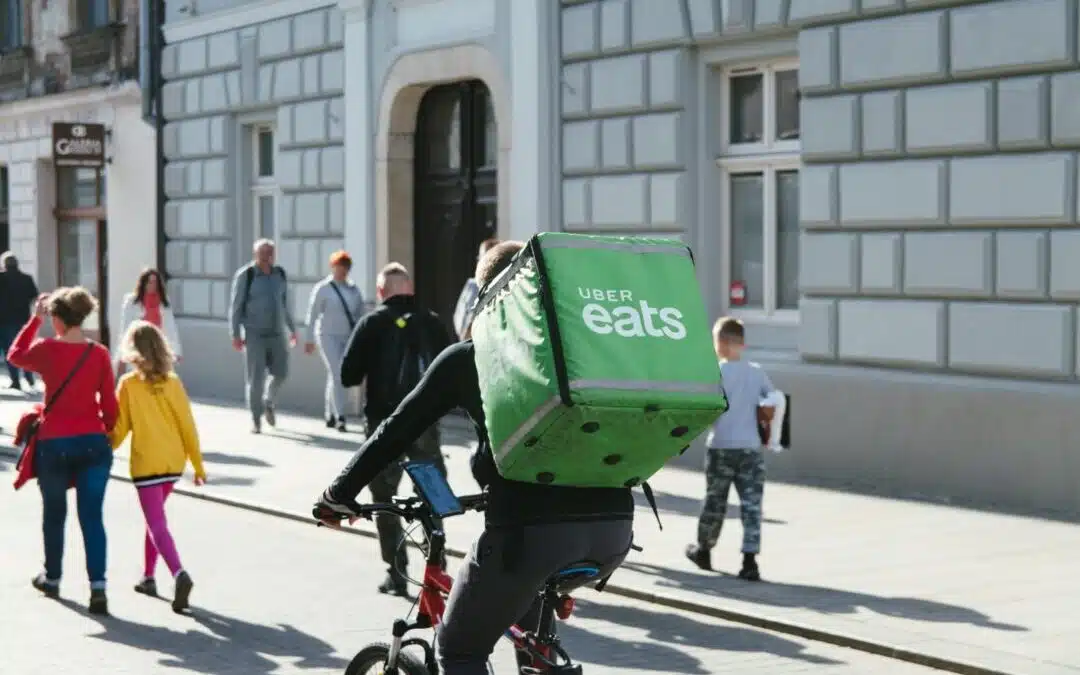The pandemic has rewarded certain business models, few more so than delivery apps. DoorDash, Uber Eats, Grubhub, are the obvious examples. Last December, in fact, DoorDash went public at a valuation of $72 billion. Business must still be good, judging from the $30 coupons I receive by text each month from one of these services. While tempting, those coupons would certainly buy a few pizzas, I have yet to use them. Why? I am not convinced that these services are helping small restauranteurs. Now, I am not even sure whose food they are delivering.
A bit of history. DoorDash has been the subject of numerous controversies over the years. It was charged with retaining and not distributing driver tips, a policy it was forced to reverse. Similarly, it is being sued for creating landing pages on its site for non-partner restaurants, pages that give DoorDash customers the impression they are ordering meals from these restaurants, until getting rejected at the checkout step. Disgruntled customers are then directed to Dash partner restaurants’ pages offering similar cuisine.
These are old news stories. What caused me to write this blog were two more recent articles, both of which make me question the nature of my food delivery apps. The first article concerns the high delivery service costs to small restaurants; the second makes me wonder who is preparing my order:
High Cost of Delivery Apps
The high cost of delivery apps isn’t necessarily news, but the impact of delivery app fees has been exacerbated by the pandemic. This November 2020 article from BerkleySide Nosh is compelling reading. It details how a small barbecue restaurant, which used to benefit from the added sales generated by delivery apps when those apps represented a small percentage of total orders (10%), is now suffering as delivery orders account for a majority of sales. Before taxes and tips, the delivery app is taking 33% of the total order value through a series delivery fees, service/marketing charges and commissions. In a low margin industry, the impact of those fees cannot be offset.
Particularly galling to me was the inability of the delivery app (in this instance, the multi billion dollar, technologically advanced, DoorDash) to address stock-outs. When the BBQ restaurant ran out of brisket the delivery app still allowed customers to order it. There was no mechanism for updating menus to address stock-outs. The result: Short orders and frustrated customers. Long term customer bad will.
Ghost Restaurants
If you are like the average delivery app customer, you assume that the food you are ordering is coming from an established restaurant of a similar name to that which you see online. You would be wrong. Increasingly, restaurants are creating multiple brands to pitch their products. These brands appear as ghost restaurants. Restaurants use these brands to improve their SEO results, to pitch a new cuisine or menu, or just to attract new customers by using a new name. The concept has its merits, as detailed in the linked article. Nonetheless, it can lead to unintended consequences. For instance, will restaurants worry about food quality when the customer doesn’t know from where the food actually comes? The unscrupulous operator can simply change his/her online brand and continue operating. I’ll admit that such behavior will be the exception but, then again, I like to know where my food is prepared.
For now, consider me a delivery app skeptic.

Peter has spent the past twenty-plus years as an acting/consulting CFO for a number of small businesses in a wide range of industries. Peter’s prior experience is that of a serial entrepreneur, managing various start-up and turnaround projects. He is a co-founder of Keurig.


